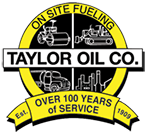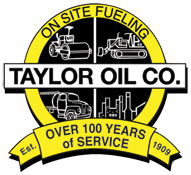As hurricane season approaches, businesses face the challenge of maintaining operations while ensuring the safety of their employees and assets. One crucial aspect of disaster preparedness is having a robust emergency fueling plan in place. Power outages, disrupted supply chains, and inaccessible fuel stations can hinder business continuity during and after a hurricane. In this blog post, we’ll explore top tips for businesses to create an effective emergency fueling plan that helps navigate these challenges and ensures resilience in the face of adversity.
- Assess Fuel Needs
Start by assessing your fuel needs based on your business’s critical operations. Identify essential equipment, vehicles, and generators that require fuel to function. Consider how much fuel each asset consumes over a specific period. This assessment will provide a clear understanding of your fuel requirements during an emergency.
- Establish Fuel Storage
To ensure a steady fuel supply, consider installing on-site fuel storage tanks. These tanks allow you to stockpile fuel in advance, reducing dependency on external sources during a crisis. Ensure the tanks comply with safety regulations and are properly maintained to prevent leaks or contamination.
- Partner with Reliable Fuel Suppliers
Build relationships with fuel suppliers who offer emergency fueling services. Ensure they have a track record of timely deliveries during emergencies. Discuss your business’s needs and establish a plan for quick fuel deliveries in case of a hurricane.
- Develop a Fuel Distribution Plan
Create a fuel distribution plan that outlines how fuel will be allocated to critical assets. Assign responsibilities for monitoring fuel levels, requesting deliveries, and overseeing fuel distribution. Prioritize essential equipment and vehicles that contribute directly to your business’s core functions.
- Maintain Fuel Quality
Fuel stored for extended periods can degrade in quality. Implement a regular fuel testing and maintenance schedule to ensure the fuel remains usable. This involves periodically treating the fuel, removing water, and addressing any contamination issues.
- Ensure Backup Power
Incorporate backup power solutions, such as generators, into your emergency fueling plan. These generators can provide electricity to vital systems during power outages. Regularly test and maintain generators to guarantee their reliability.
- Train Employees
Educate your employees about the emergency fueling plan. Make sure they understand their roles, responsibilities, and the importance of fuel conservation during emergencies. Conduct drills to familiarize employees with fueling procedures and safety protocols.
- Monitor Weather Alerts
Stay vigilant by monitoring weather forecasts and hurricane alerts. As a hurricane approaches, activate your emergency fueling plan to ensure you’re adequately prepared well in advance.
- Test the Plan
Regularly test your emergency fueling plan through simulations and drills. This practice helps identify potential gaps or inefficiencies in the plan and allows you to refine it for better performance.
- Review and Update
After each hurricane season, review the effectiveness of your emergency fueling plan. Identify lessons learned and areas for improvement. Use this feedback to update and enhance your plan, ensuring it remains robust and adaptable to changing circumstances.
Conclusion
An effective emergency fueling plan is a cornerstone of disaster preparedness for businesses during hurricane season. By assessing fuel needs, establishing storage, partnering with reliable suppliers, and training employees, businesses can navigate the challenges of power outages and disrupted supply chains with greater resilience. Remember that a well-prepared plan not only safeguards operations but also contributes to the safety and well-being of employees and the community at large. Feel free to reach out to Taylor Oil Company for assistance during these trying times.



